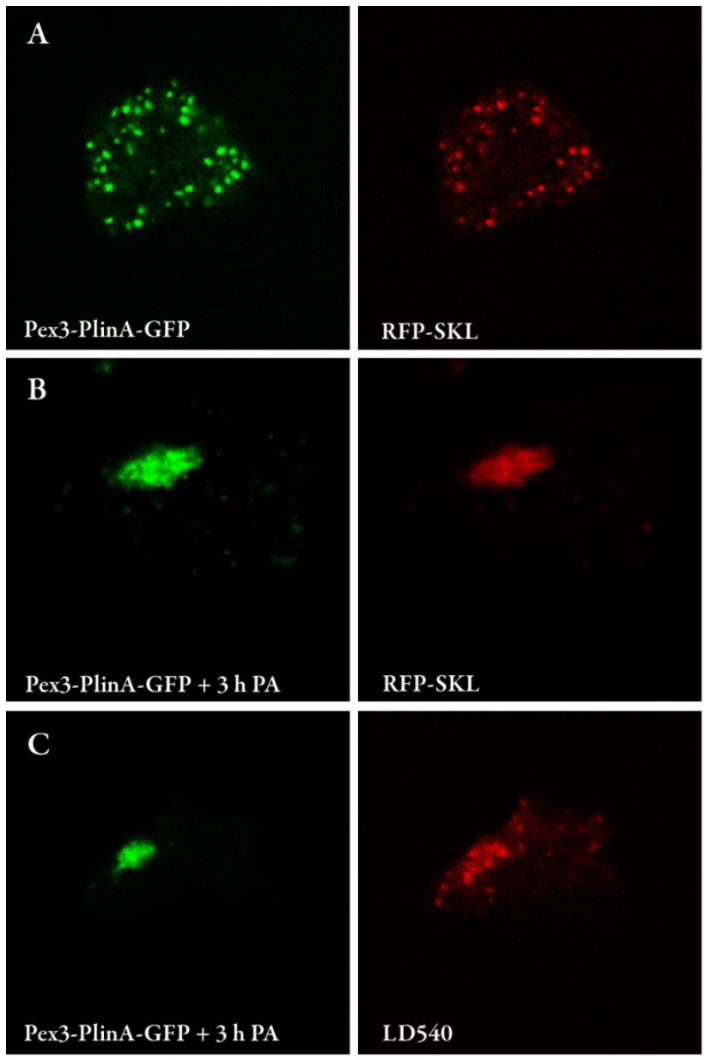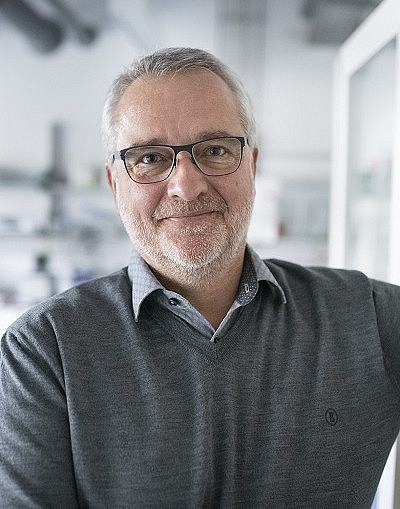Cell Biology
Enforced association of cellular organelles involved in fatty acid metabolism in Dictyostelium

Although not yet established in the relevant textbooks, increasing evidence from organisms as diverse as yeast and mammals suggests that cellular organelles are equipped with machineries that allow their close contact in the living cell, although it is not yet clear to which extent these bridges are in operation. The anticipated purpose of this close apposition is to facilitate the exchange of metabolites.
In the Dictyostelium cell, evidence for organelle contacts is still lacking. Nevertheless, biosynthesis and degradation of certain metabolites involves the transfer of intermediates from one organelle to the other. One particular clear example can be made in fatty acid metabolism. From the surrounding medium, a fatty acid is first taken up into an endosome, then transferred to the endoplasmic reticulum, where ester bonds to glycerol are formed. The resulting fat molecule is stored in a lipid droplet, but in times of energy demand the fatty acids are cleaved off and degraded in the peroxisome.
Using molecular genetics, we (i. e. mainly P. Paschke) have created chimeric molecules consisting of one protein that is a regular component of one organelle and another one that usually resides on the surface of another organelle and a marker to visualize the subcellular distribution of the chimera.
In panel A, a chimera (green) is seen to reside on peroxisomes (red) that are distributed throughout the entire cell. Upon addition of a fatty acid to the medium (panel B, +3h PA) all the peroxisomes (red) are observed to gather into a single cloud within the cell. The reason for this change in distribution is the formation of lipid droplets (red dots in panel C, that are stained by the fluorescent dye LD540) most of which concentrate in the position where the hybrid (green in C) occurs. Together panels B and C illustrate that the cloudy signal is a co-aggregate of lipid droplets and peroxisomes provoked by the Pex3-PlinA chimera that is visualized by the green fluorescent protein (GFP).
Using similar strategies, we have produced cells that form hetero-aggregates of lipid droplets with the endoplasmic reticulum or with mitochondria. The possible influence of organelle proximity on fatty acid metabolism is currently under investigation.
Prof. Dr. Markus Maniak
full member

- Telephone
- +49 561 804-4798
- Fax
- +49 561 804-4592
- maniak[at]uni-kassel[dot]de
- Site
- Universität Kassel
Fachbereich 10 - Naturwissenschaften & Mathematik
Institut für Biologie
Heinrich-Plett-Straße 40
34132 Kassel
- Room
- 1601
